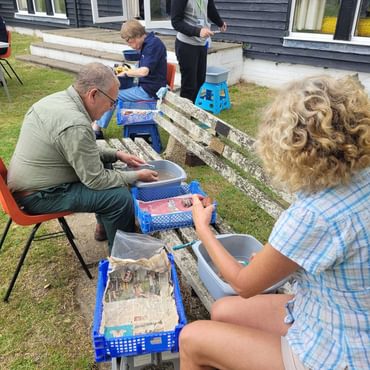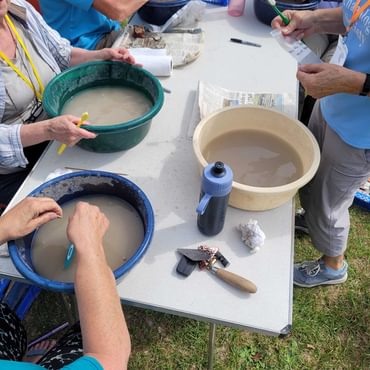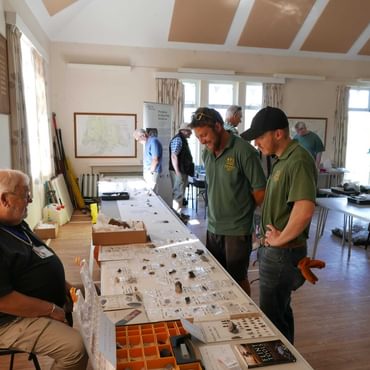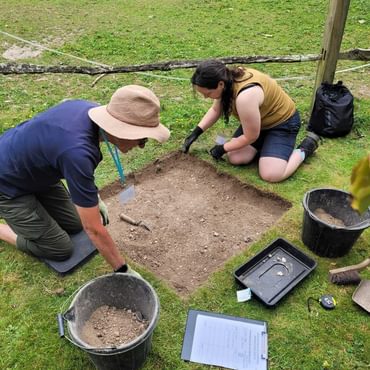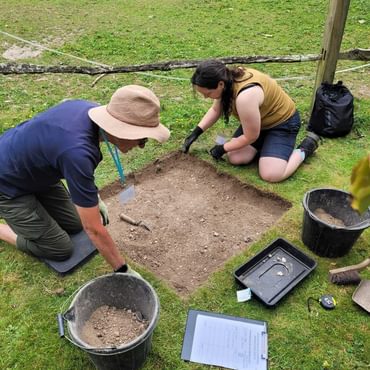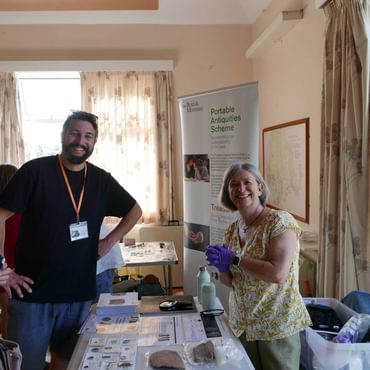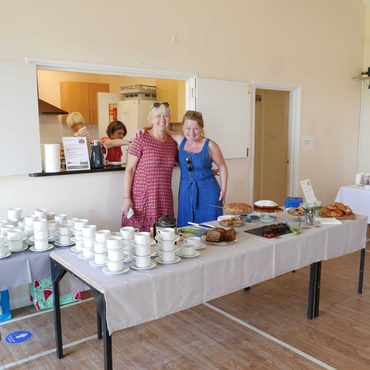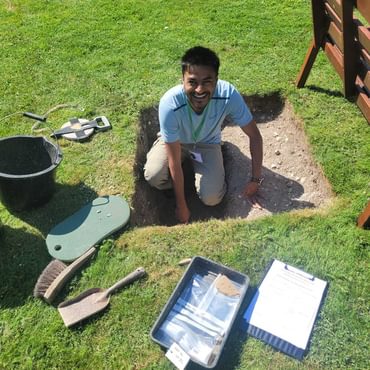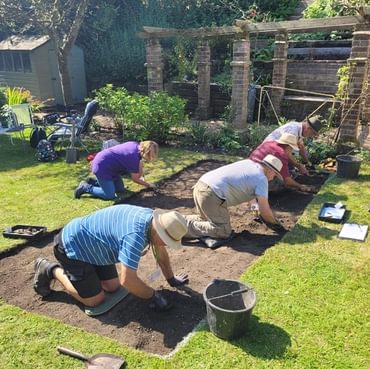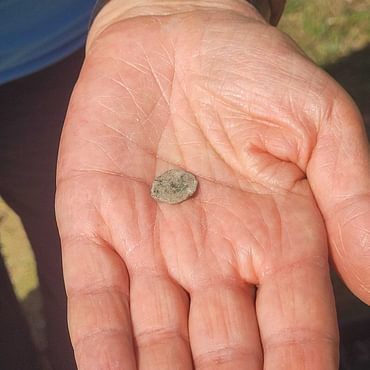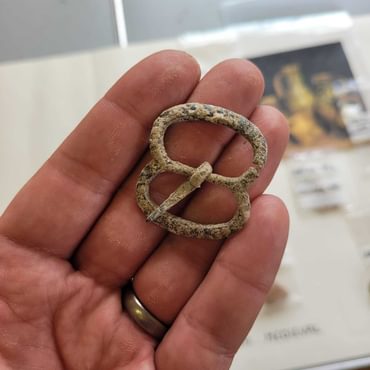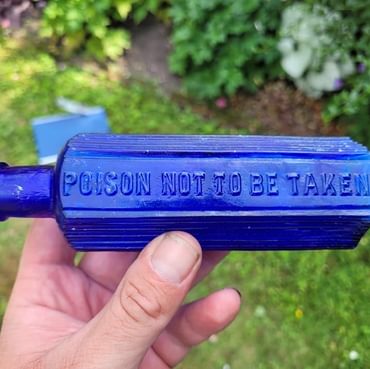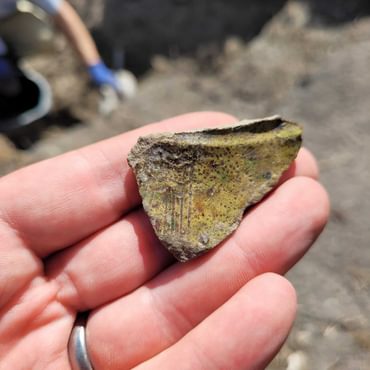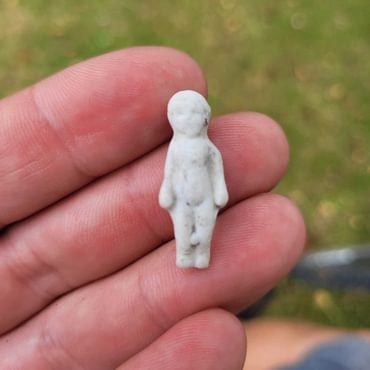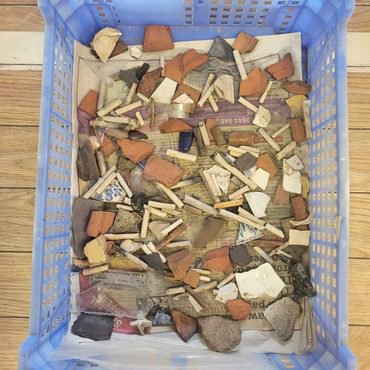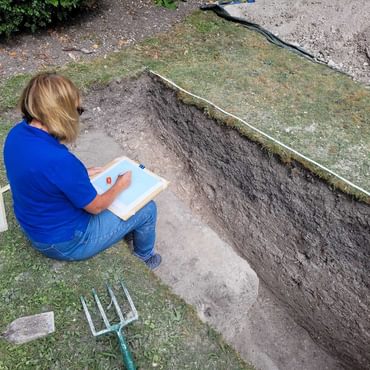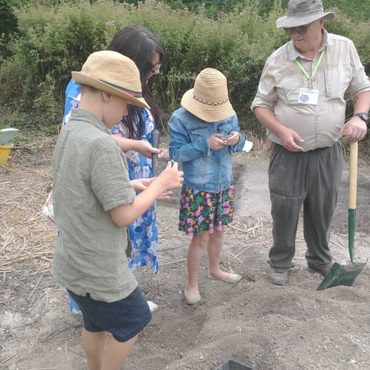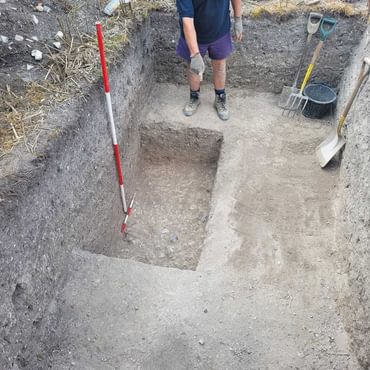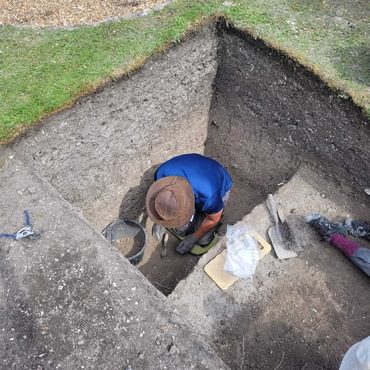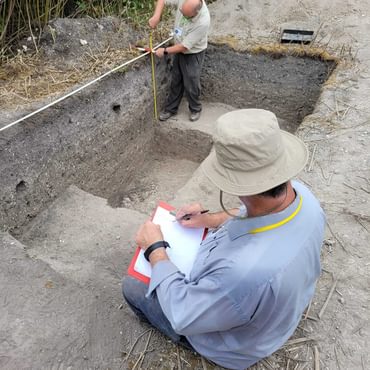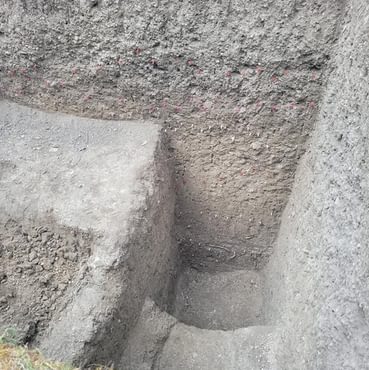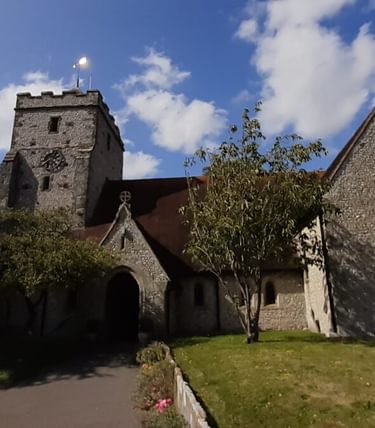
News Story
Worthing Museum has been conducting an exciting archaeological dig amongst the rolling hills of Arundel. In a joint effort with Worthing Archaeological Society, The Burpham Big Dig has seen residents of the villages of Burpham and Wepham donate their gardens for archaeological investigation. The goal of the project has been to get a clearer understanding of the area’s local history. It is hoped that they will uncover some hotly anticipated artefacts from the Saxon settlement in the area.
Taking place from August 10th to 24th, the Big Dig brought together volunteers, archaeologists, and residents. Find out more here about the community and their experiences of the dig, as well as updates from the project.
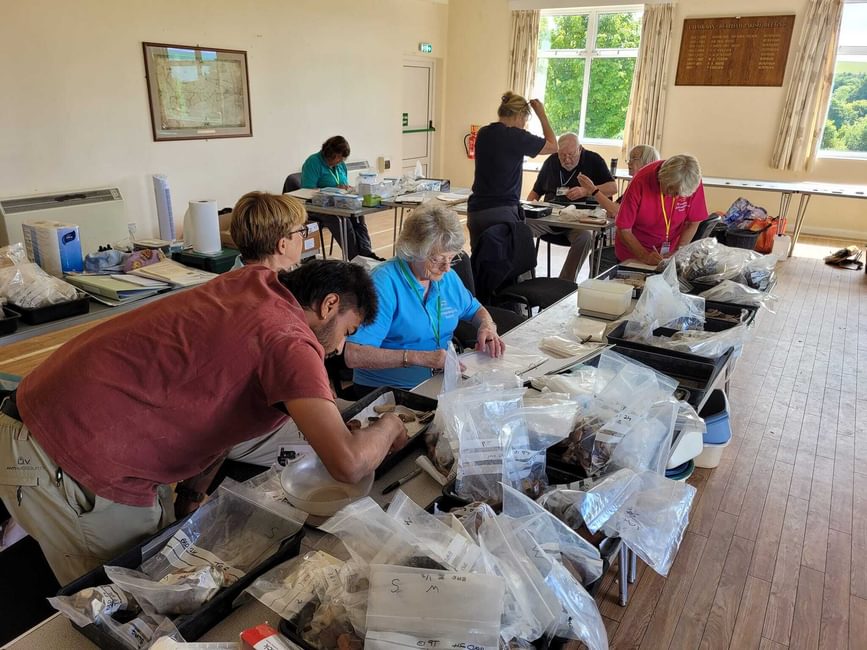
Volunteers process finds at Burpham Village Hall
Burpham Big Dig People
Residents
The residents of Burpham and Wepham were keen to lend their gardens and their time in support of the project. When asked, residents who were participating expressed their excitement to find out more about their village. They relayed how it was fun, interesting and a great way to bring their community together. Most of them had lived in the village for many years and were keen to take part. They were incredibly generous with their time. Halfway through the project, the team also welcomed over 250 visitors to the Open Day. The residents put on a spread of delicious homemade cakes, teas and coffees. Nearly 150 people joined Worthing Museum’s Archaeology Curator, James Sainsbury, on his tours of Burpham as well.
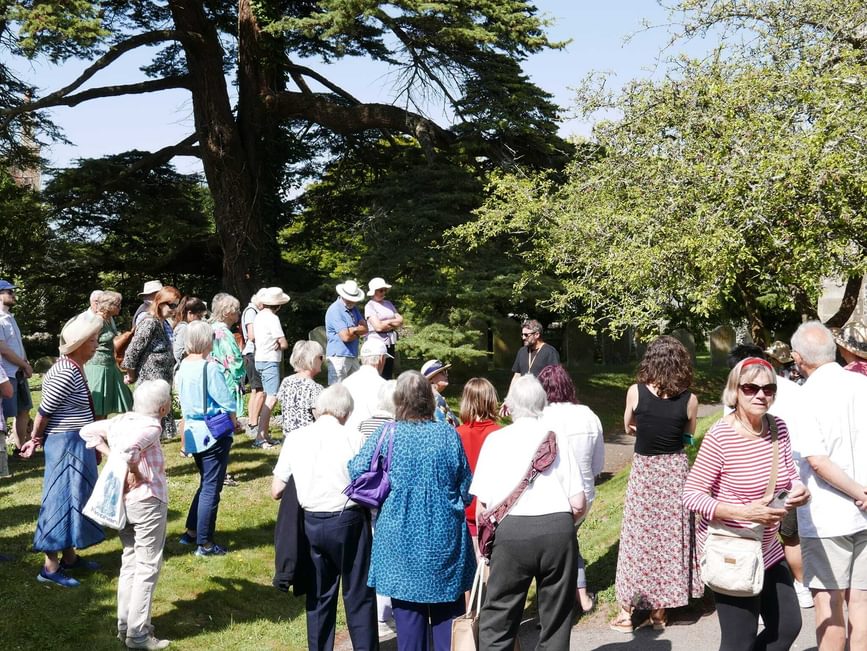
James Sainsbury leads a tour of open test pits
Volunteers & Experts
The project attracted volunteers from Worthing Archaeological Society, and outside the village. Speaking to these volunteers it was clear they all possessed a life-long fascination with archaeology. Many had spent their childhoods digging on the Downs for artefacts. Some had then spent their professional careers in the archaeological industry. We were fortunate to meet one volunteer, who was just 14 years old, and came along in his school holidays to join in. We also spoke with Sid, who is joining us at Worthing Museum to work on his PhD. Sid’s focus is on ceramics from either side of the Norman Conquest, looking at potential dietary changes following the invasion. Sid shared with us that he became interested in archaeology as a child from watching films about fictional archaeological explorations.
The people we spoke to were all joining the project for their own personal reasons, but were united by their interest in community and physical history.
Image gallery
The Burpham Big Dig Project
34 gardens in Burpham parish signed up to the dig, where 1x1 m test pits were excavated. Additionally, two residents offered larger areas to dig full trenches. It was hoped that the trenches would help identify the location and size of the rampart defences that give Burpham its name. In Old English, ‘Burh’ meant fort, and ‘ham’ is a common suffix meaning farm or homestead.
Burpham and its surrounding areas were chosen as a dig site due to their history as a defensible, domestic setting. Historically, there have been some incredible finds in the area. A woolly mammoth and Palaeolithic hand axes have been found. A 4000-year-old Bronze Age burial was once found whilst digging a cesspit. Roman coins have also been discovered, along with an Arabic glass vessel dating back to the 12th century. This dig hoped to unearth more information about the village’s Saxon defences, which haven’t been found before.
Two weeks of digging
Day one kicked off with breaking ground on the project as the sun shone down on the teams. Day two got off to a positive start, uncovering a coin in Test Pit 2. At first, it was supposed to be possibly the 17th or 18th century. However, by day 7, it was deemed almost certainly 4th-century Roman. Across the site, this ended up being the only coin found, which is surprising for a site of continual habitation. Other early finds included Oyster shells, flint flakes and later medieval pottery. Test pit 15 revealed a very exciting find – a fully intact dinosaur.
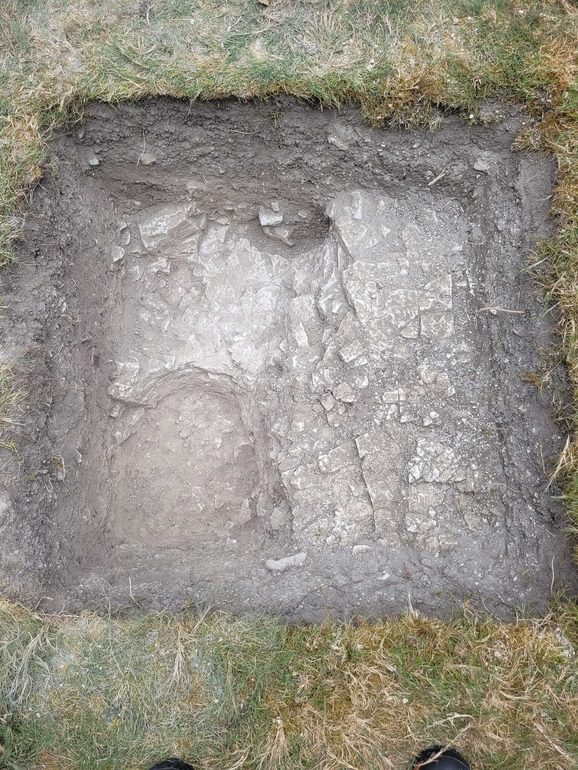
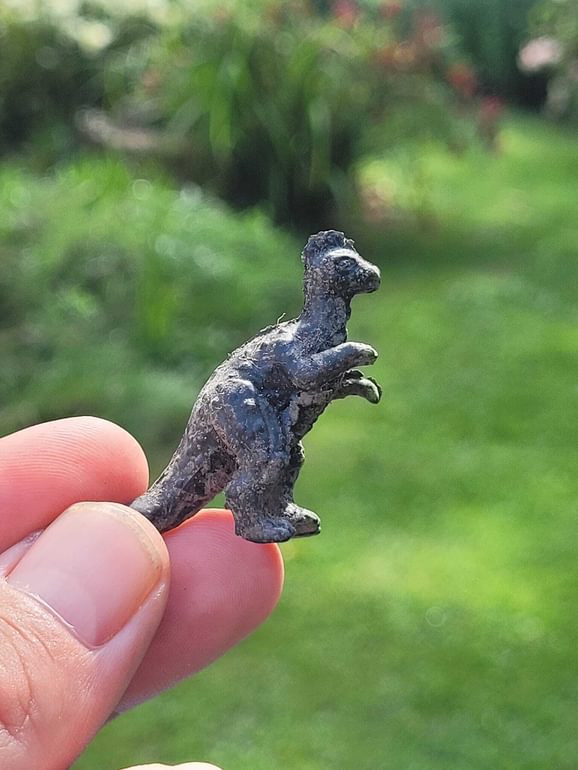
The test pits revealed interesting finds and features throughout the project. These included two post holes cut into the chalk bedrock in Test Pit 11. Mediaeval pot sherds were particularly present in the Wepham test pits. A rubbish pit at Burpham contained ceramics and at least one butchered pig skull. Finds of these kinds are important for understanding the lifestyles, practices and diets of previous residents in the area.
Image gallery
Trenches & Ditches
Over the course of the dig, three full trenches were dug. Trench B began on day 2 with a large job of clearing masses of vegetation for a 6×2 metre trench. Large quantities of metal slag were found on and near the surface of this area. This indicates that the area’s name of ‘Forge Field’ is very apt.
Trench A was opened on day 3, in the search for the external ditch of the promontory Fort. Soon, it was reaching levels with 17th-century material. Trench A revealed a Victorian ‘Frozen Charlotte‘ doll from its spoil heap. It also contained a copper alloy buckle dating 1350-1650 AD. By day 9, Trench A was reaching nearly 2 metres in depth, suggesting the presence of a ditch. Small fragments of possibly late Saxon pottery were found at this depth.
Image gallery
In the middle of week two, Trench A showed signs of the sizable outer defensive ditch to the fort. Because of this, a third trench, Trench C, was dug down. It was hoped that this would reveal the slope of the external ditch, which was uncovered the next day. The discovery of evidence of the ditch was a wonderful achievement to round out the project. This feature has never been seen to such an extent. Its presence now gives a clear indication of the size and shape of the ditch. It also reveals more through its lack of Iron Age artefacts. This suggests it was either an original Saxon endeavour, or it was recut in the Saxon era, clearing any evidence from previous times.
Filling, Cataloguing and Celebrating
As the dig came to a close, it was time to fill in any remaining test pits and the three large trenches. Thanks to its great revelation of the defensive ditch, a ritual deposition of chocolate wrappers was left at the very bottom of Trench A, so future archaeologists know it’s been dug before. The last day of the project was occupied with sorting, finds processing, packing up and cleaning the village hall. The generous and welcoming residents threw the dig team an afternoon tea to celebrate their great efforts.
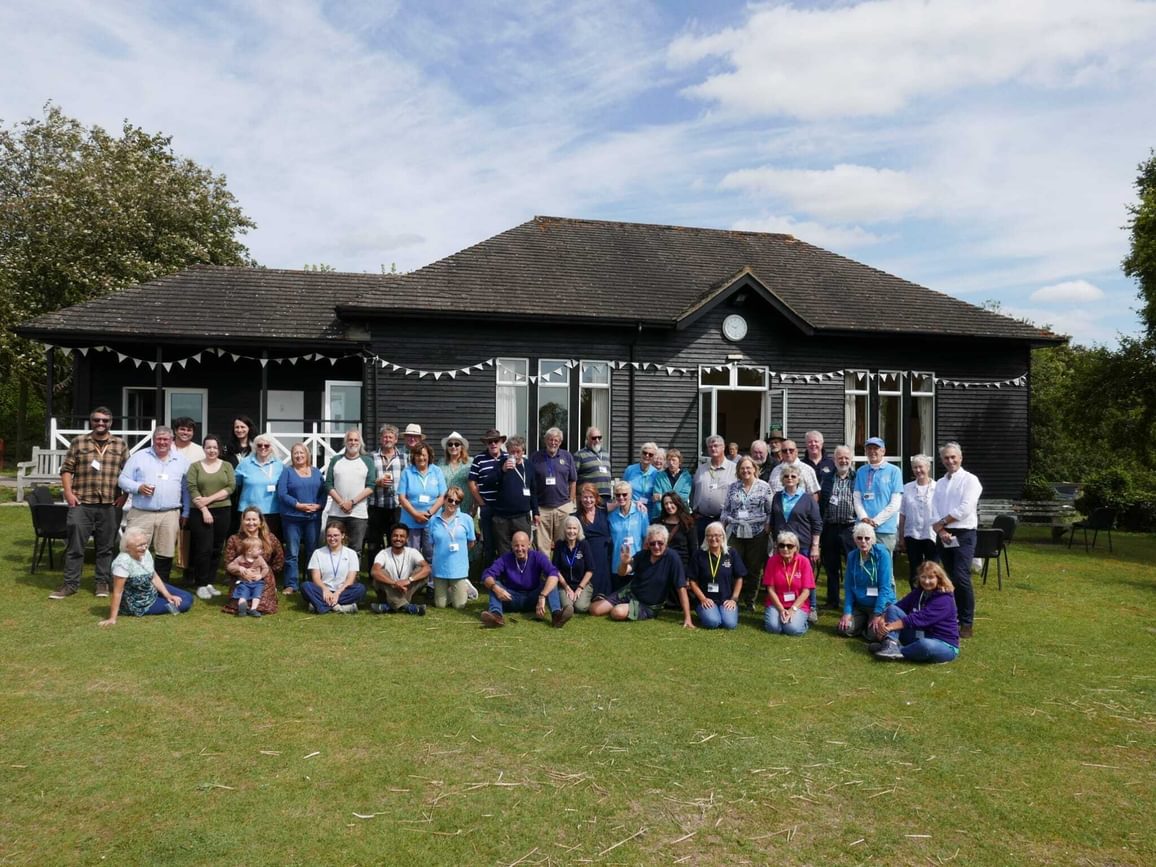
The team of volunteers and residents outside Burpham Village Hall
The next months will see a great effort to process, sort and record the huge quantity of finds. Much of this work will be undertaken by the expert volunteers at Worthing Archaeological Society. The culmination of this work will be an exhibition at Worthing Museum in the autumn of 2025. It will showcase the important finds, but also the people who made the project happen.
The team at Worthing Museum are grateful to Worthing Archaeological Society and the residents of Burpham and Wepham for their tremendous efforts. The Burpham Big Dig has been made possible through the generous support from South Downs National Park Trust, South Downs National Park Authority, Ian Askew Charitable Trust, and Burpham Parish Council, along with Burpham Village Hall and Recreation Ground.
